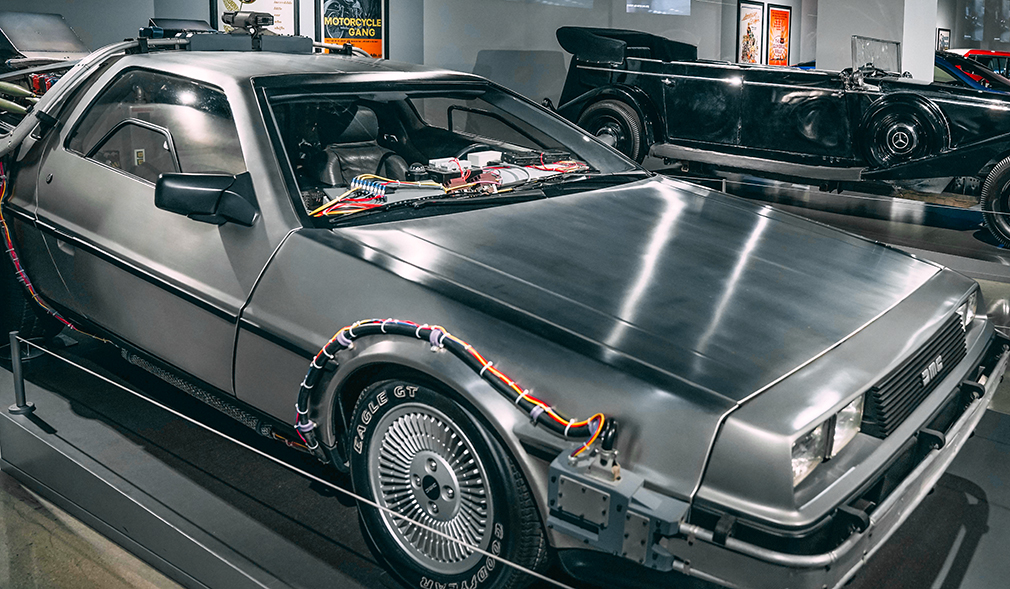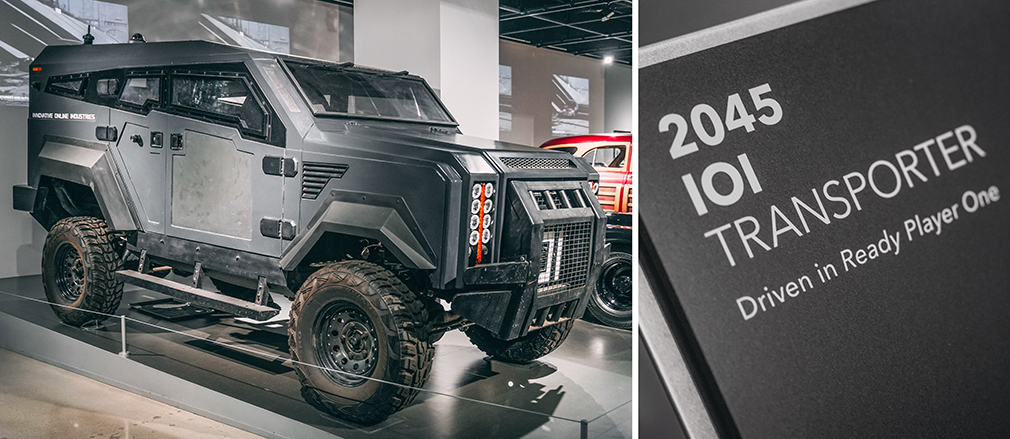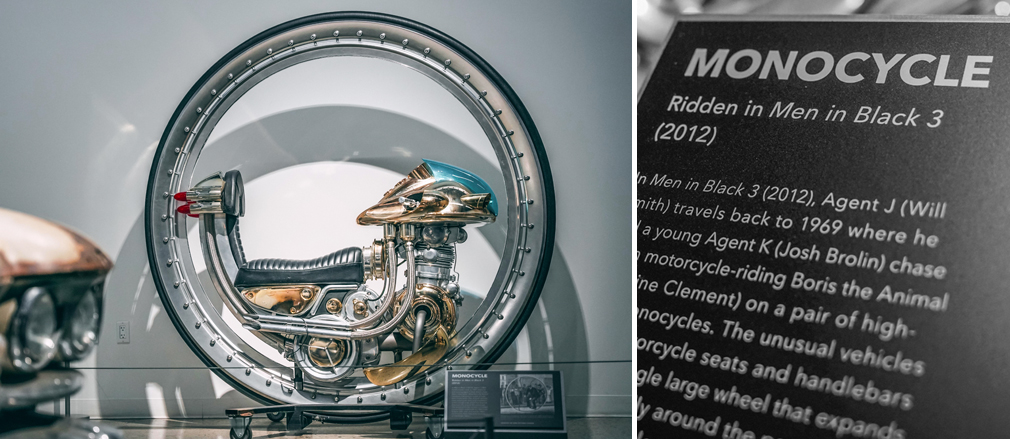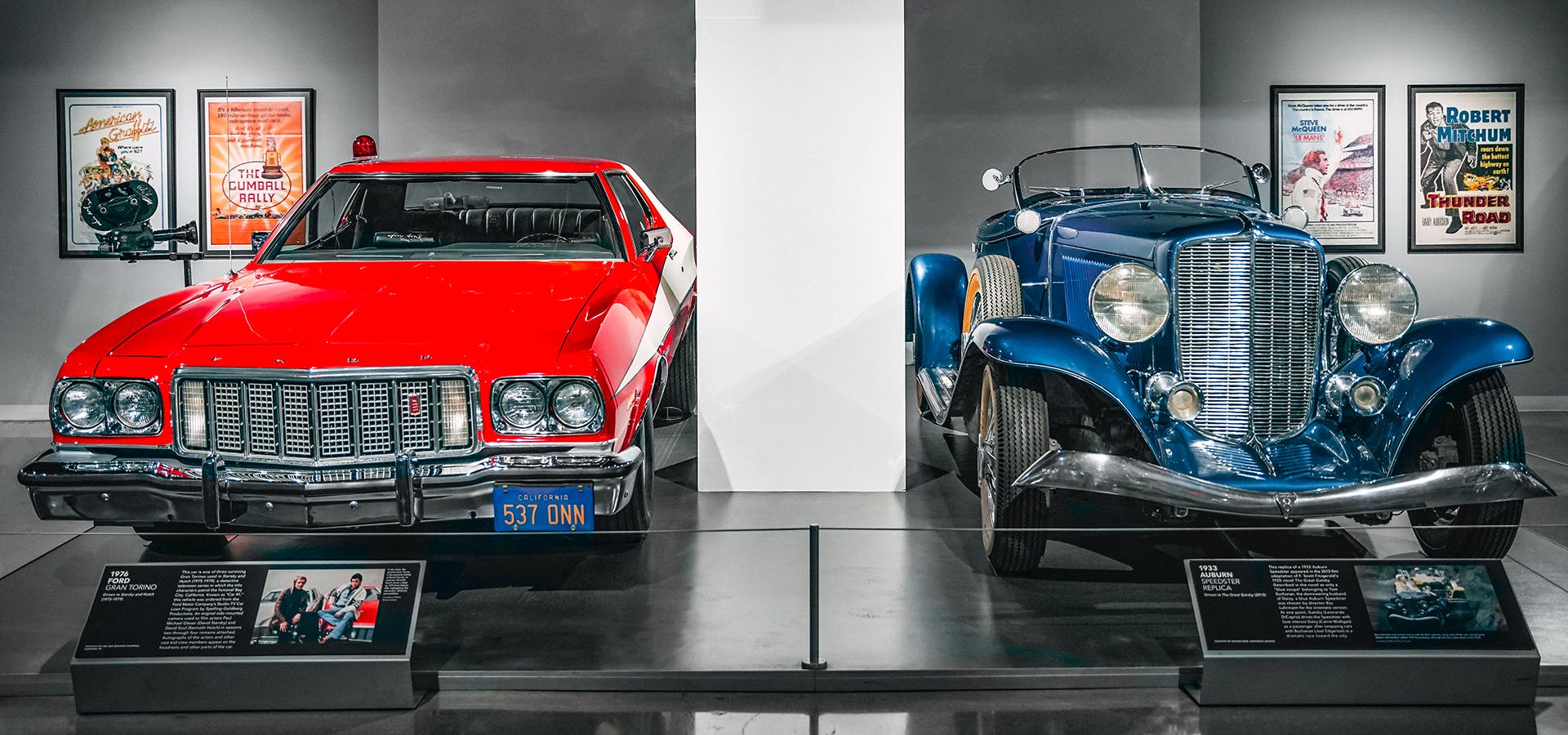When Marty McFly gets his first glimpse of the time machine in Robert Zemeckis’ 1985 science-fiction/comedy Back to the Future, he slowly rises from a crouch, his eyes wide and his mouth slightly agape. When he witnesses the machine in action and then learns that the 1981 Delorean DMC-12 actually works as a time-traveling device, he can only utter the obvious.

“Are you telling me that you built a time machine … out of a DeLorean?” he asks Doc Brown, almost incredulously.
“The way I see it,” Doc replies, “if you’re gonna build a time machine into a car, why not do it with some style?”
The prospect of a stylish time machine is one that surely belongs in a museum, which is why it’s appropriate that such a fashionable device, fictitious as it might be, is currently on display at the Petersen Automotive Museum. The vehicle, along with several others on display, serves as a continuation of the institution’s popular exhibit, Hollywood Dream Machines: Vehicles of Science Fiction and Fantasy (the world’s largest museum exhibition of sci-fi movie vehicles).

The current exhibit was unveiled earlier this year during Oscar season, and now, three months into its year-long engagement, the collection of Silver Screen vehicles continues to wow patrons both young and old. “Some vehicles used in television and movies have become just as popular as the stars themselves,” says the museum’s executive director Terry L. Karges. “We are excited to display what are genuinely some of the most iconic vehicles from Hollywood’s long and storied history.”
Located in the Omaze Hollywood Gallery on the Otis Booth History Floor, the exhibit includes a diverse selection of cars, motorcycles, and custom creations that have starred in popular movies and television series throughout the decades. Aside from the aforementioned DeLorean, movie buffs and car enthusiasts who grew up in the 80s—or at least appreciating 1980s culture—will also be drawn to the Batmobile (driven in the original Tim Burton film, Batman, circa 1989) and a modified 1959 Cadillac Miller-Meteor (better known as “Ecto-1”), which served as the rapid response vehicle in the original Ghostbustersfilm. While the Ecto-1 appeared in all subsequent franchise sequels, it is presented at the museum in its original 1984 configuration.
“It’s almost like meeting an actor when you see the Delorean DMC or the Ecto-1 just 12 inches in front of you,” says Michael Bodell, the museum’s chief operating officer. “Being in LA, you can walk into a restaurant, see someone famous, and you immediately recognize that person. It’s exciting. And the same thing happens in the museum with these cars.”

Not all of the vehicles on display in the museum’s Hollywood gallery drum up feelings of nostalgia. Modern creations, such as the Moto-Terminator from the 2009 movie Terminator Salvation, as well as the monocycle and Boris bike from Men in Black 3, circa 2012, are juxtaposed against the 1933 Auburn Speedster replica used in 2013 film The Great Gatsby and the 1931 Mercedes Grosser 770 replica used in the 2021 film Red Notice.
As Bodell suggests, the exhibition provides a thrill for people to see several iconic film cars up close, but it also reveals just how far cinematography has come over the past several decades. Take the Lexus LC500, which appeared in the 2018 film Black Panther. The vehicle on display is complete with bullet holes and scratches. Similarly, the 1931 Mercedes Grosser 770 replica is nicked and scratched, its windshield pockmarked with six spider-web cracks and bullet holes.
“There’s a clear transition from film to digital where depicted damage and the way cars are constructed, they had to get so much more realistic,” Bodell explains. “When you see painted on damage or bullet holes or rust, all of those things could be a little less polished 30 years ago. And when you see modern day cars right up against historic or vintage cars, it really shows that juxtaposition.”

As for the LC500, Bodell believes the car is one of the most popular in the current exhibit, both for the widespread fandom that the Marvel franchise of films has achieved and also for its damaged state. “Because it’s all scratched up with bullet holes, it immediately draws you in,” he says. “There’s a story just in its aesthetic.”
Could such an exhibition succeed in automotive museums elsewhere? Sure. But its impact is that much stronger in Los Angeles, in part for being right in Hollywood’s backyard but also for the city’s prevalent car culture. “In Los Angeles, cars are like the outermost layer of our clothing,” Bodell says, borrowing an analogy that the museum’s historian often uses. “It also applies to characters in a film. For Doc, in Back to the Future, the DeLorean was an accessory for him; it was a key moment in the film.”
Looking to the future, the museum has plans to rotate a handful of the vehicles on display, as some are temporarily on loan to the institution (the Batmobile and DeLorean, however, are permanent fixtures within the collection). Those forthcoming changes also excite Bodell. “It’s like we got a new wardrobe that everyone wants to see,” he says, continuing the accessories analogy. “It’s an opportunity for us to provide new stories for our guests to learn and experience.”

When Doc Brown prepped Marty for the DeLorean’s first experimental trip through time, he made no allusions about what he was about to witness. “If my calculations are correct, when this baby hits 88 miles per hour,” Doc exclaimed, “you’re gonna see some serious shit.”So, too, will patrons of the Petersen Automotive Museum, no matter when this year they choose to visit.










